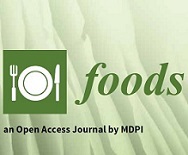Antioxidant, antidiabetic, and antiobesity properties, TC7-Cell cytotoxicity and pptake of Achyrocline satureioides (Marcela) conventional and high pressure-assisted extracts
Dublin Core
Título
Tema
Abstract
The growing incidence of non-communicable diseases makes the search for natural sources of bioactive compounds a priority for such disease prevention/control. Achyrocline satureioides
(‘marcela’), a plant rich in polyphenols and native to Brazil, Uruguay, Paraguay, and Argentina, could be used for this purpose. Data on its antidiabetic/antiobesity properties and cellular uptake of bioactive compounds are lacking. The potentiality of non-thermal technologies such as highhydrostatic
pressure (HP) to enhance polyphenol extraction retains attention. Thus, in the present study aqueous and ethanolic marcela extracts with/without assisted-HP processing were chemically characterized and assessed for their in vitro antioxidant capacity, antidiabetic and antiobesity activities, as well as cellular cytotoxicity and uptake on intestinal cell monolayers (TC7-cells, a clone of Caco-2 cells). Aqueous and ethanolic conventional extracts presented different polyphenolic
profiles characterized mainly by phenolic acids or flavonoids, respectively, as stated by reverse phase-high-performance liquid chromatography (RP-HPLC) analyses. In general, ethanolic extracts presented the strongest bioactive properties and HP had none or a negative effect on in vitro bioactivities comparing to conventional extracts. TC7-cell viability and cellular uptake demonstrated in conventional and HP-assisted extracts, highlighted the biological effects of marcela bioactive
compounds on TC7-cell monolayers. TC7-cell studies showed no HP-induced cytotoxicity. In sum, marcela extracts have great potential as functional ingredients for the prevention/treatment of chronic diseases such as diabetes.
Autor
Fuente
Editor
Fecha
Derechos
Información sobre Derechos de Autor
(Por favor lea este aviso antes de abrir los documentos u objetos)
La legislación uruguaya protege el derechode autor sobre toda creación literaria, científica o artística, tanto en lo que tiene que ver con sus derechos morales, como en lo referente a los derechos patrimoniales con sujeción a lo establecido por el derecho común y las siguientes leyes (LEY 9.739 DE 17 DE DICIEMBRE DE 1937 SOBRE PROPIEDAD LITERARIA Y ARTISTICA CON LAS MODIFICACIONES INTRODUCIDAS POR LA LEY DE DERECHO DE AUTOR Y DERECHOS CONEXOS No. 17.616 DE 10 DE ENERO DE 2003, LEY 17.805 DE 26 DE AGOSTO DE 2004, LEY 18.046 DE 24 DE OCTUBRE DE 2006 LEY 18.046 DE 24 DE OCTUBRE DE 2006)
ADVERTENCIA: La consulta de este documento queda condicionada a la aceptación de las siguientes condiciones de uso: Este documento es únicamente para usos privados enmarcados en actividades de investigación y docencia. No se autoriza su reproducción con fines de lucro. Esta reserva de derechos afecta tanto los datos del documento como a sus contenidos. En la utilización o cita de partes debe indicarse el nombre de la persona autora.Formato
Idioma
Tipo
Identificador
Document Item Type Metadata
Original Format
- Fecha de agregación
- October 13, 2021
- Colección
- Bibliografía Nacional Química
- Tipo de Elemento
- Document
- Etiquetas
- Achyrocline satureioides, Compuestos Bioactivos, Compuestos fenólicos, Flavonoides, Metabolismo Celular
- Citación
- Fernández Fernández, Adriana Maite, “Antioxidant, antidiabetic, and antiobesity properties, TC7-Cell cytotoxicity and pptake of Achyrocline satureioides (Marcela) conventional and high pressure-assisted extracts,” RIQUIM - Repositorio Institucional de la Facultad de Química - UdelaR, accessed July 26, 2024, https://riquim.fq.edu.uy/items/show/6378.
- Archivos

